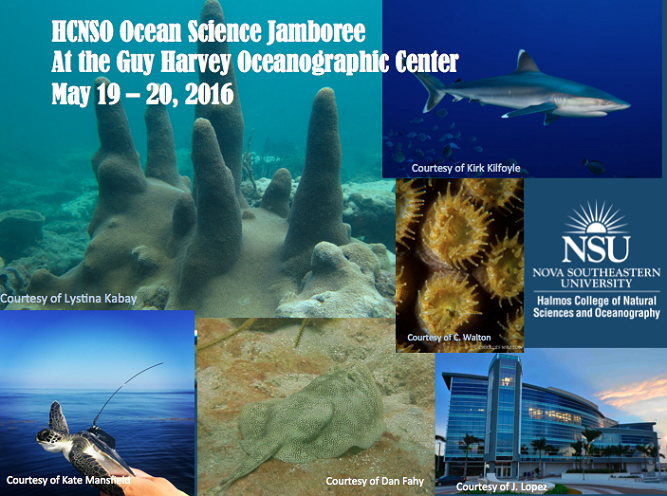Microbial and Genomic Analysis of South Florida Environmental Samples in Search of Pathogenic Salmonella
Location
Guy Harvey Oceanographic Center Facility
Start
5-20-2016 9:45 AM
End
5-20-2016 10:00 AM
Abstract
The natural tropical wetland which is the Everglades plays a large role in South Florida’s water shed. Agricultural and conservation areas connect Lake Okeechobee to Florida Bay by canals, swamps, and rivers, with the Everglades in the middle. With agriculture being a large influence on the ecosystem in the Everglades it is important to understand its environmental influence on both the resident microbial communities and its influence on human health. Salmonellosis is a foodborne infection brought on by the pathogen Salmonella from ingestion of the bacterium from food contaminated from water. With over one million infections leading to over 19,000 hospitalizations each year in the United States, it is important to understand the resident population and its distribution in water across agricultural and environmental areas in South Florida. In July 2015, a two-year study began to sample six drainage canals and areas of standing water located in Broward and Collier counties for the purpose of isolating and characterizing the pathogen Salmonella and characterizing its presence within resident microbial communities (“microbiomes”). With water and soil samples collected monthly, over 230 Salmonella isolates were isolated and identified for genome sequencing. In addition, microbial DNA from water was extracted for sequencing the 16S rRNA gene region V4 for microbial community analysis. To date, 70 samples were selected for 16S rRNA amplicon sequencing on the Illumina MiSeq platform with a minimum of 29,000 reads per sample Preliminary results indicate seasonal and temporal variation in the composition of resident microbial communities in these canals. High water levels, temperature variations, and flood runoff due to excessive rainfall appear to have the largest influence on the seasonal variation on the microbial communities.
Microbial and Genomic Analysis of South Florida Environmental Samples in Search of Pathogenic Salmonella
Guy Harvey Oceanographic Center Facility
The natural tropical wetland which is the Everglades plays a large role in South Florida’s water shed. Agricultural and conservation areas connect Lake Okeechobee to Florida Bay by canals, swamps, and rivers, with the Everglades in the middle. With agriculture being a large influence on the ecosystem in the Everglades it is important to understand its environmental influence on both the resident microbial communities and its influence on human health. Salmonellosis is a foodborne infection brought on by the pathogen Salmonella from ingestion of the bacterium from food contaminated from water. With over one million infections leading to over 19,000 hospitalizations each year in the United States, it is important to understand the resident population and its distribution in water across agricultural and environmental areas in South Florida. In July 2015, a two-year study began to sample six drainage canals and areas of standing water located in Broward and Collier counties for the purpose of isolating and characterizing the pathogen Salmonella and characterizing its presence within resident microbial communities (“microbiomes”). With water and soil samples collected monthly, over 230 Salmonella isolates were isolated and identified for genome sequencing. In addition, microbial DNA from water was extracted for sequencing the 16S rRNA gene region V4 for microbial community analysis. To date, 70 samples were selected for 16S rRNA amplicon sequencing on the Illumina MiSeq platform with a minimum of 29,000 reads per sample Preliminary results indicate seasonal and temporal variation in the composition of resident microbial communities in these canals. High water levels, temperature variations, and flood runoff due to excessive rainfall appear to have the largest influence on the seasonal variation on the microbial communities.


